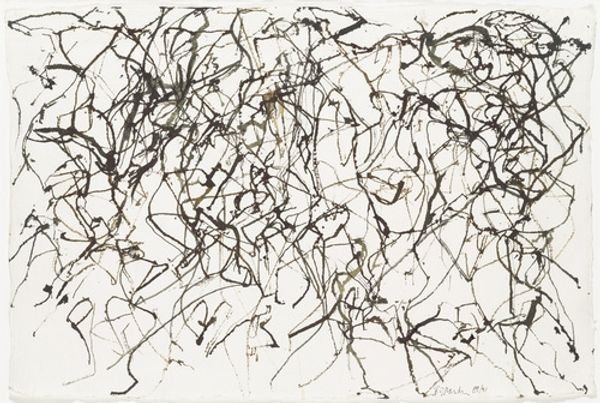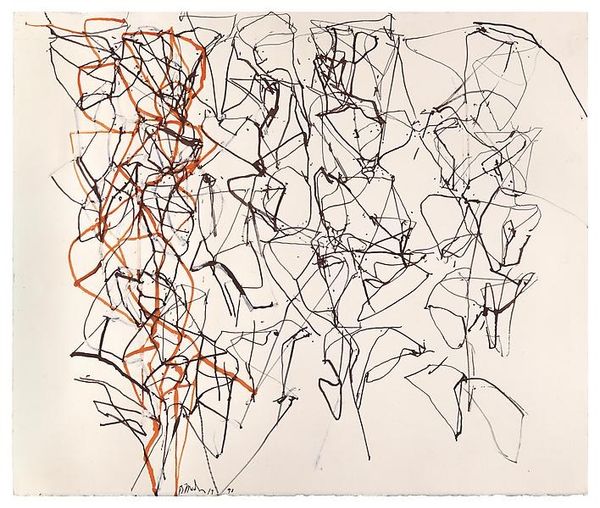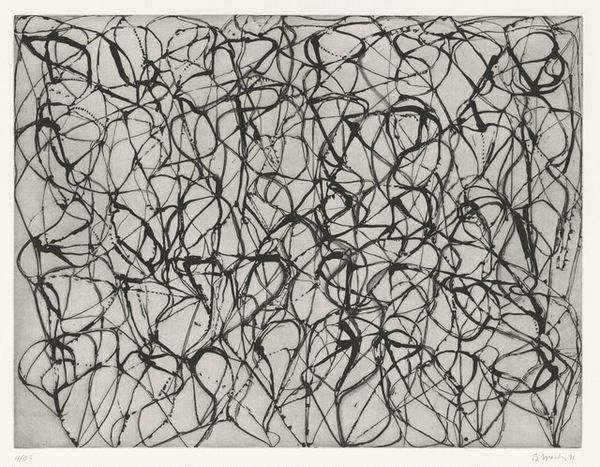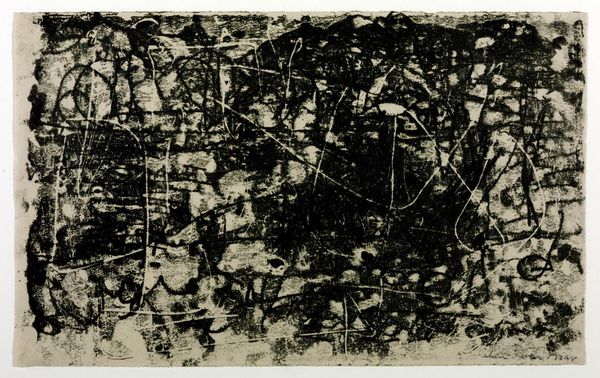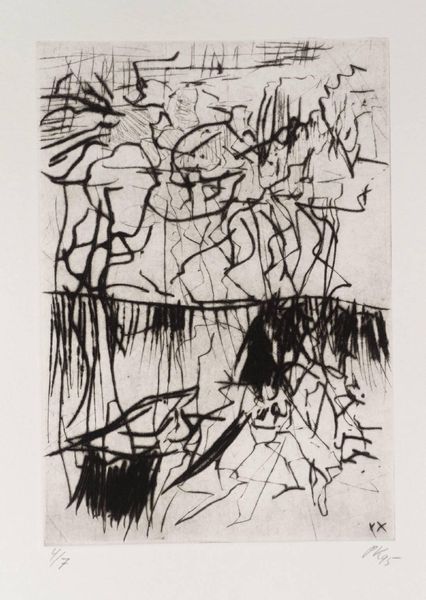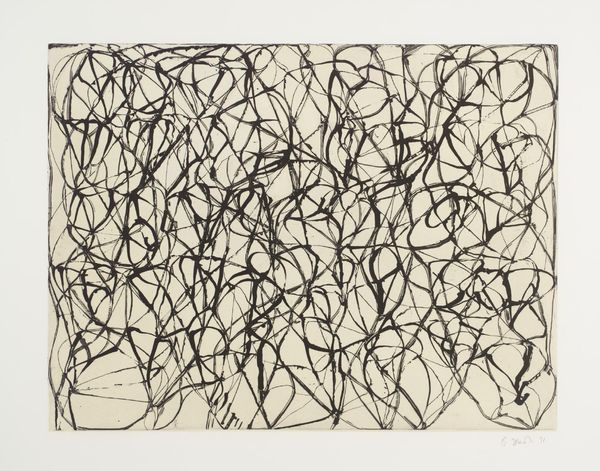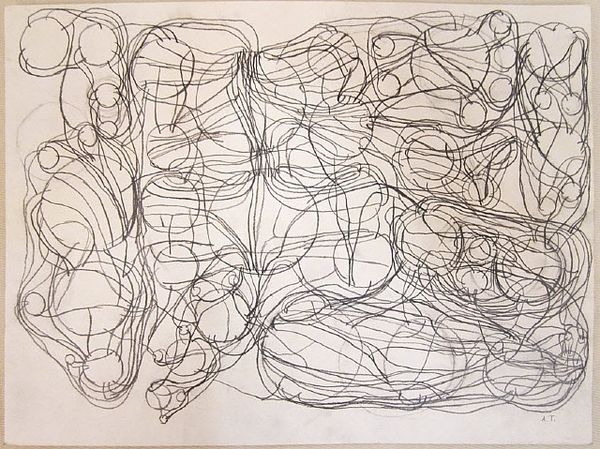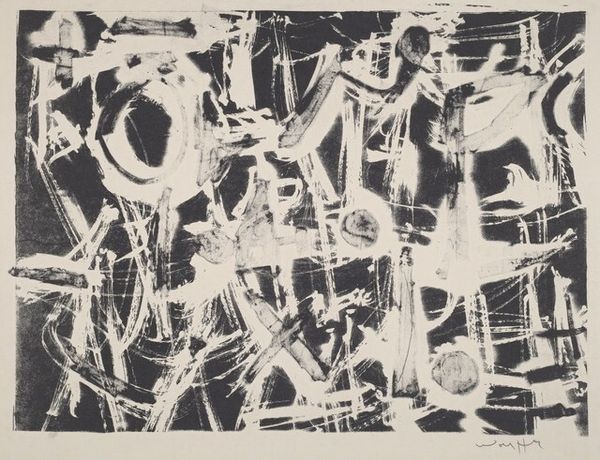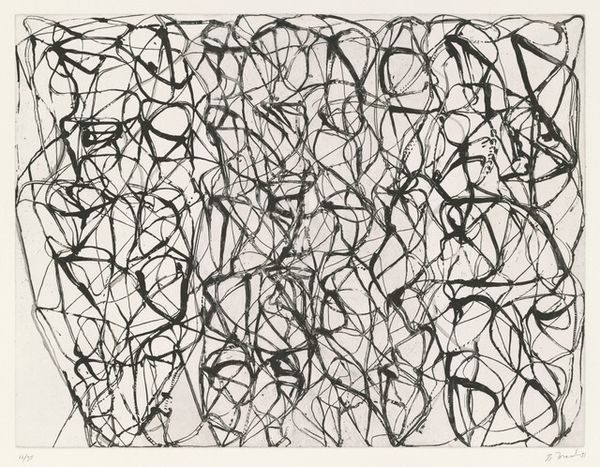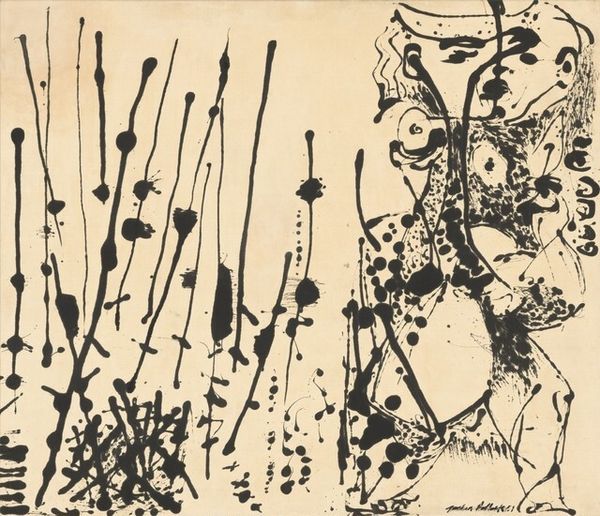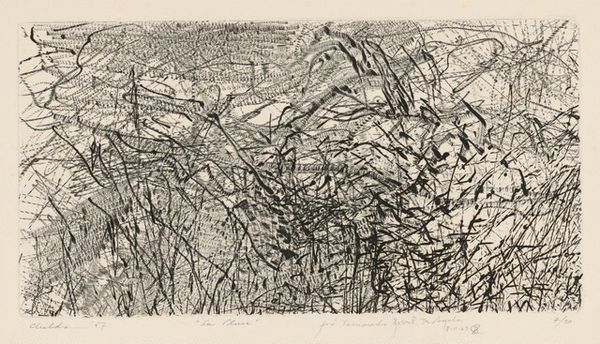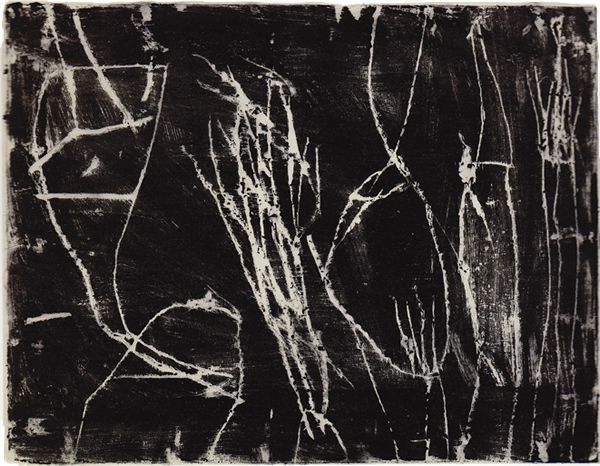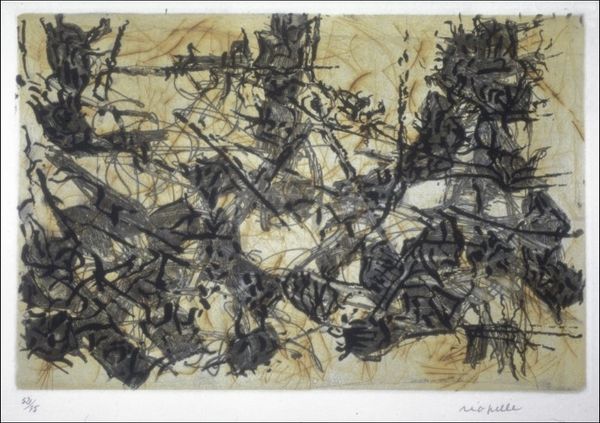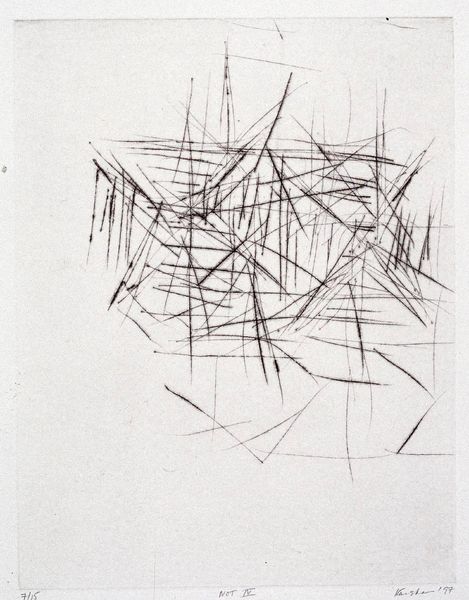
Dimensions: support: 575 x 784 mm frame: 651 x 861 x 42 mm
Copyright: © ARS, NY and DACS, London 2014 | CC-BY-NC-ND 4.0 DEED, Photo: Tate
Editor: Looking at Jackson Pollock’s Number 23, I’m struck by its chaotic yet strangely balanced composition in monochrome. What kind of symbolism do you see in a work like this? Curator: Well, the lack of conventional representation pushes us to consider the inherent symbolism of the materials themselves. The paint, the gesture, and the canvas become potent symbols of creation and raw emotion. What memories or feelings does it evoke for you? Editor: It reminds me of the Abstract Expressionists’ desire to connect with the unconscious, but I’m not sure how that translates visually. Curator: Precisely! Pollock aimed to bypass conscious thought, allowing primal impulses to guide his hand. Think of it as a visual echo of ancient cave paintings, connecting us to humanity’s earliest forms of expression. Editor: So, the symbols aren't literal, but more about accessing a deeper, shared human experience? Curator: Exactly. It’s about the primal act of mark-making and how those marks resonate across time and cultures. Editor: That gives me a new perspective. I see that Pollock’s art is more than just chaos; it’s a link to our collective past. Curator: Indeed, it is a powerful connection with our deep cultural memory.
Comments
Join the conversation
Join millions of artists and users on Artera today and experience the ultimate creative platform.
tate 8 months ago
⋮
Pollock began to drip and pour paint in 1947. This work, in which streams of black and white enamels were poured onto the surface, shows the improvisatory possibilities of this method. The sweeping arc of Pollock's gesture can be seen in the liquid black, which has bled into the white painted background to become grey. This acts as a base over which the thicker white paint is deliberately woven. The effect is rhythmic but controlled, energetic but delicate. Although there was an element of chance, Pollock frequently emphasised the importance of decisions over the merely accidental. Gallery label, July 2008
